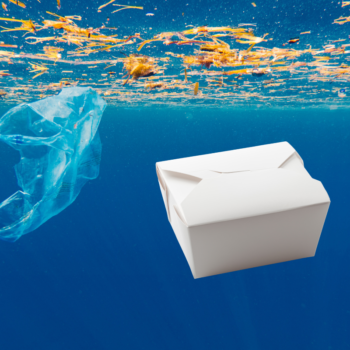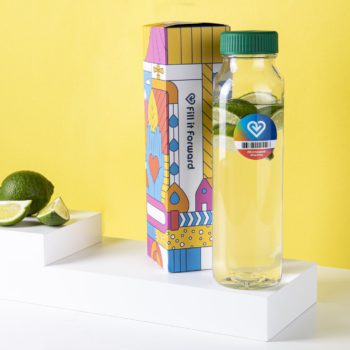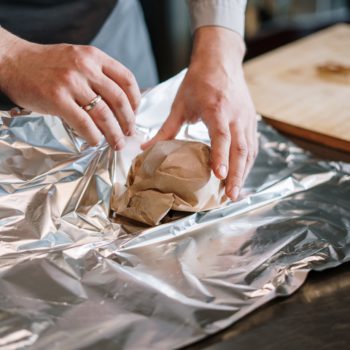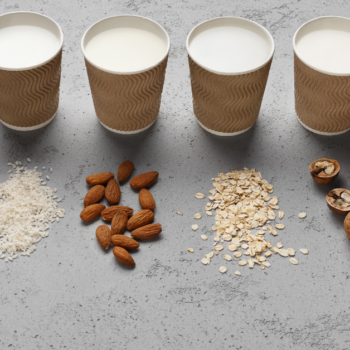|
|
Balloons have long been integral to celebrations and events, adding a touch of whimsy to decor. However, growing environmental concerns surrounding helium-filled balloons have prompted a reevaluation of their impact. This article delves into eco-friendly balloon alternatives, explicitly focusing on biodegradable and compostable options.
Key Takeaways:
- Biodegradable Balloons: Biodegradable balloons are designed to naturally break down over time, reducing their environmental impact compared to traditional balloons.
- Degradation Process: Biodegradable balloons break down through exposure to sunlight, oxygen, and moisture, returning to the earth without causing long-term harm.
- Material: These eco-friendly balloons are typically made from natural latex derived from rubber trees, free from harmful chemicals and considered environmentally friendly.
- Impact on Wildlife: If released into the environment, traditional balloons can harm wildlife as animals may ingest them. Biodegradable balloons pose a lower risk as they break down naturally.
- Compostable Balloons: Compostable balloons are another eco-friendly option, designed to decompose in industrial composting facilities. They are typically made from natural latex and break down in about 16 weeks.
The Nature of Biodegradable Balloons
Biodegradable balloons offer a more eco-conscious alternative to traditional balloons, as they break down naturally over time, significantly reducing their environmental impact. This natural degradation process contrasts conventions that persist in the environment for years, posing a long-term threat.
How do biodegradable balloons degrade?
Biodegradable balloons follow a natural decomposition process triggered by exposure to critical elements: sunlight, oxygen, and moisture. These environmental factors work in tandem to break down the balloon material gradually, allowing it to reintegrate with the Earth’s natural cycles.
The breakdown of biodegradable balloons occurs as follows:
- Sunlight: Ultraviolet (UV) radiation from sunlight is pivotal in initiating the degradation process. It weakens the balloon’s structure and begins to break down the material.
- Oxygen: Oxygen facilitates the oxidation of balloon components, further accelerating decomposition.
- Moisture: Moisture, such as rain or humidity, permeates the balloon’s surface, aiding in the breakdown of its molecular bonds.
This combination of natural forces collaborates to transform the biodegradable balloon into biodegradable matter that safely returns to the environment.
What materials are biodegradable balloons made of?
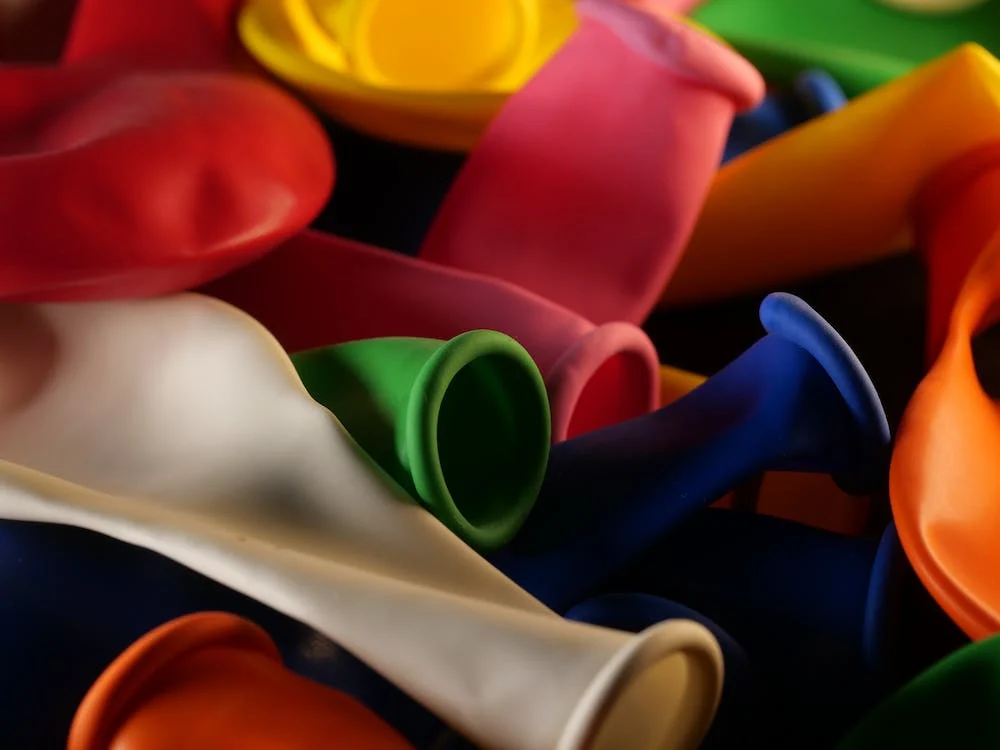
Biodegradable balloons are primarily crafted from natural latex, a material sourced from the sap of rubber trees. This latex is harvested through a sustainable and environmentally responsible process. Using natural latex in biodegradable balloons sets them apart from their synthetic counterparts, as they are free from harmful chemicals and additives that can harm ecosystems.
The key attributes of natural latex balloons include:
- Chemical-Free: Natural latex balloons do not contain harmful chemicals, making them a safer and greener choice.
- Sustainable Sourcing: The rubber tree plantations that supply latex for these balloons are managed sustainably, promoting forest conservation.
- Reduced Environmental Impact: The production of natural latex balloons generally has a lower ecological footprint than synthetic alternatives.
Are biodegradable balloons environmentally friendly?
Yes, biodegradable balloons are recognized as a more environmentally friendly option when compared to traditional balloons. Their capacity to biodegrade naturally means they pose reduced risks to wildlife and contribute to minimizing litter in our ecosystems.
Individuals can enjoy balloons while demonstrating a commitment to preserving the environment by choosing biodegradable balloons for celebrations and events. These balloons harmonize festivity with sustainability, leaving behind a smaller ecological footprint.
Alternatives to Balloon Releases
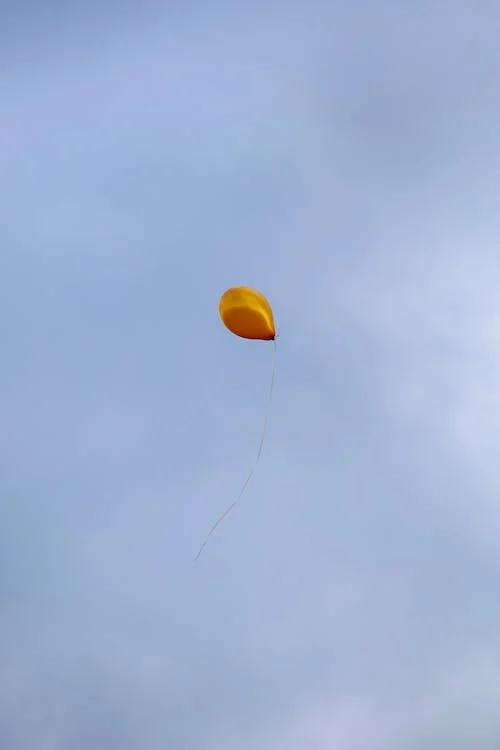
While balloon releases have been a popular way to celebrate special occasions, they have negative environmental consequences. Thankfully, there are alternative options that are both festive and eco-friendly.
Are there environmentally friendly alternatives to traditional balloons?
Several environmentally friendly alternatives to traditional balloons can help you celebrate sustainably. Here are some eco-conscious options:
- Biodegradable and Compostable Balloons: Biodegradable and compostable balloons, as discussed earlier in this article, are made from natural materials and break down harmlessly when disposed of properly. These balloons offer a similar celebratory experience without the environmental concerns associated with traditional balloons.
- Reusable Decorations: Non-balloon alternatives like bunting, banners, and reusable decorations can create a festive atmosphere at events and gatherings. These decorations can be used repeatedly for various occasions, reducing waste and environmental impact.
- Water Balloons: Water balloons made from natural rubber latex provide endless hours of fun and can be filled and refilled for water balloon fights. They are a sustainable alternative to traditional latex balloons, as they break down naturally and do not harm the environment when disposed of properly.
- Foil Balloons: Foil balloons are another eco-friendly option. These balloons are crafted from a thin layer of aluminum and can be reused multiple times for various celebrations. They do not pose the same risks to wildlife and ecosystems as latex balloons.
Where can you buy biodegradable balloons?
The availability of biodegradable balloons has increased as awareness of their environmental benefits grows. You can find biodegradable balloons at various sources:
- Party Supply Stores: Many party supply stores have started offering biodegradable balloons as a greener and safer alternative to traditional balloons. These stores may carry a selection of biodegradable balloon options for different occasions.
- Online Retailers: Numerous online retailers specialize in eco-friendly party supplies and offer biodegradable balloons in various shapes, sizes, and colors. Online shopping provides convenience and access to a wide range of eco-conscious options.
- Eco-Friendly Specialty Stores: Some specialty stores focus on eco-friendly and sustainable products. These stores often carry biodegradable balloons along with other environmentally responsible party supplies.
Individuals can enjoy celebrations while reducing their environmental impact and contributing to a more sustainable future by choosing these eco-friendly alternatives and opting for biodegradable balloons when desired.
The Harmful Effects of Balloons on the Environment
Balloons, while often used to celebrate special occasions, can harm the environment when not handled responsibly, especially when released into the natural world. It is essential to understand these negative consequences and consider eco-friendly alternatives.
How are balloons harmful to wildlife?
Balloons pose a significant threat to wildlife, particularly when released into the environment. Here’s how they can harm animals:
- Ingestion: Animals, including sea turtles, birds, and marine life, can mistakenly ingest balloons, particularly those that have landed in bodies of water. Balloons can be mistaken for food, and when consumed, they can lead to blockages in the digestive systems of these creatures. These blockages can result in injury or death.
- Entanglement: Balloon strings or ribbons can entangle wildlife, trapping them and hindering their mobility. Animals may become unable to feed, swim, or fly, leading to stress, injury, or even death.
- Litter: Balloons that do not biodegrade quickly can become litter in natural environments. This litter can entice curious animals, which may ingest or become entangled in balloon debris.
Real-life cases have highlighted the harmful impact of balloons on wildlife, illustrating the importance of addressing this issue:
Embedded Video Link:
- Sea Turtles in Florida: In Florida, a state known for its coastal habitats, sea turtles often fall victim to balloon debris. Sea turtles, including the endangered loggerhead and leatherback species, frequently mistake deflated balloons for jellyfish, one of their primary food sources. Ingesting balloons can lead to digestive blockages, malnutrition, and a higher predation risk.
- Birds and Balloon Entanglement: Birds on land and in aquatic environments frequently encounter balloons and their ribbons. A well-documented case involved a seagull in the United Kingdom entangled in a balloon string. The bird could not fly or hunt for food, and despite rescue efforts, it succumbed to its injuries.
- Marine Life in Australia: Australia’s marine ecosystems, including the Great Barrier Reef, are home to diverse species. Unfortunately, balloons released into the ocean can drift long distances, threatening marine life. Instances of sea creatures ingesting balloon fragments have been reported, emphasizing the need for responsible balloon use in coastal areas.
Do balloons take a long time to degrade?
Yes, traditional balloons, especially those made of synthetic materials like plastic, can take years to degrade fully. During this extended period, they remain in the environment, posing risks to wildlife and contributing to pollution. The slow degradation of these balloons extends their harmful impact, making them a long-lasting threat to ecosystems.
What impact does the balloon industry have on the environment?
The balloon industry, particularly in producing Mylar balloons made from foil, has a substantial environmental impact. Here are some ways in which the industry affects the environment:
- Resource Depletion: The manufacturing of Mylar balloons often involves synthetic materials and chemicals, contributing to the depletion of natural resources. The production process requires energy and raw materials, which can strain ecosystems.
- Greenhouse Gas Emissions: Balloons’ manufacturing and distribution processes release greenhouse gases into the atmosphere. These emissions contribute to climate change and environmental degradation.
- Waste Generation: The production and use of balloons result in waste generation. When balloons end up in landfills, they can persist for extended periods, further contributing to environmental problems.
Understanding the environmental consequences of the balloon industry highlights the importance of adopting sustainable and eco-friendly alternatives to minimize harm to the planet and its wildlife.
What are Compostable Balloons?
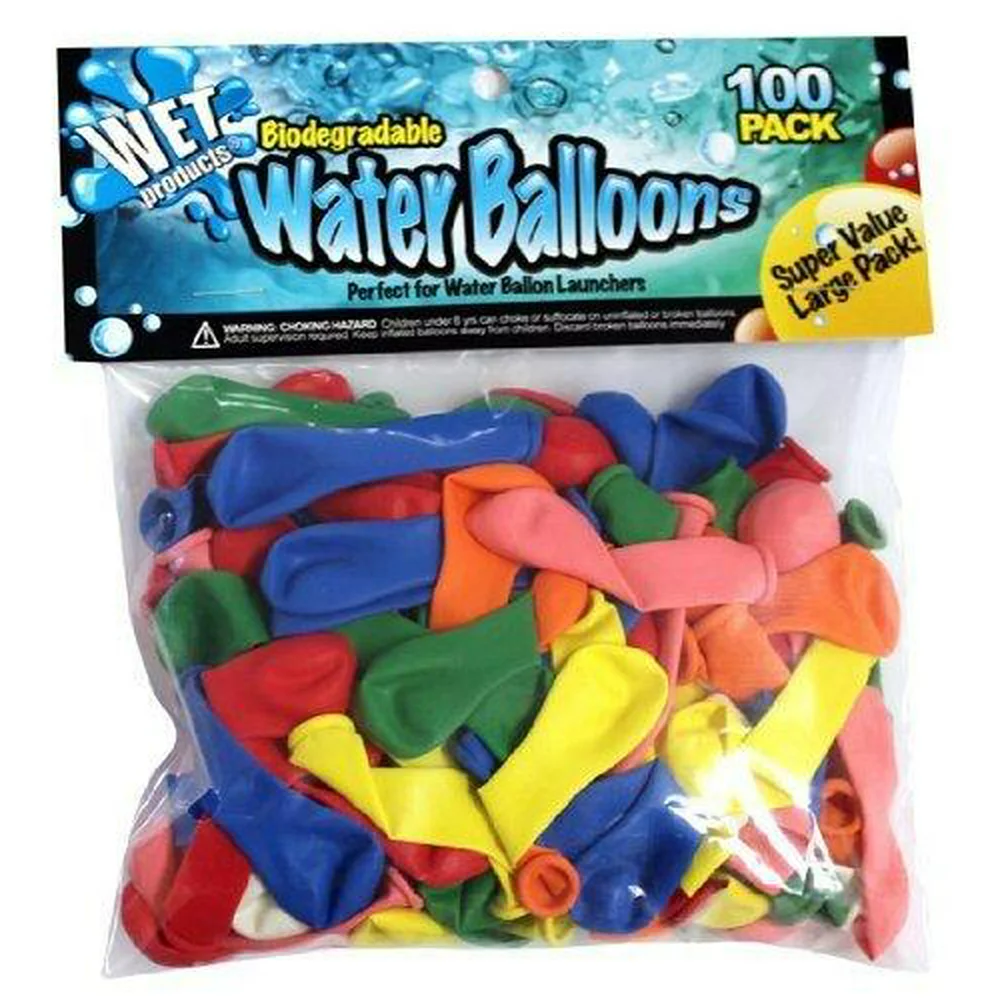
Image Credit: Walmart.com
Compostable balloons provide another eco-friendly option for those seeking to minimize their environmental impact when celebrating special occasions. These balloons are specially designed to break down naturally in a composting environment, making them a responsible choice for environmentally conscious individuals.
How do compostable balloons decompose?
Compostable balloons undergo a unique decomposition process that distinguishes them from traditional balloons:
- Composting Environment: Compostable balloons are designed to be disposed of in an industrial composting environment. Unlike regular landfills, industrial composting facilities provide the specific conditions for organic materials to break down efficiently.
- Microbial Action: Within the composting facility, compostable balloons are exposed to various microorganisms that play a crucial role in decomposition. These microorganisms, including bacteria and fungi, help break down the balloon’s natural latex material.
- Ideal Conditions: These balloons’ composting process relies on oxygen, moisture, and the right temperature. These conditions support the efficient decomposition of the balloon material without leaving harmful residues.
In summary, these balloons, typically made from natural latex, undergo specific processing to ensure they meet composting standards. When placed in an industrial composting environment, they are exposed to the right conditions and microorganisms that facilitate their breakdown, allowing the balloon to return to the earth without leaving harmful residues.
What are compostable balloons made of?
Compostable balloons are typically crafted from natural latex, similar to biodegradable balloons. However, they undergo additional processing to meet specific composting standards. These balloons are free from synthetic materials or harmful chemicals, making them a safe and sustainable choice.
How long does it take for compostable balloons to degrade?
The time it takes for compostable balloons to degrade fully can vary depending on several factors, including the composting facility’s specific conditions and the balloons’ composition. On average, compostable balloons can break down completely within approximately 16 weeks in an industrial composting environment.
This relatively short degradation period minimizes their environmental impact, ensuring they return to the earth without causing harm. Choosing compostable balloons as part of your celebration can contribute to a more sustainable and responsible approach to enjoying special occasions while reducing waste in landfills.
Greenwashing in the Balloon Industry
Greenwashing is a term used to describe the deceptive practice of making misleading or unsubstantiated claims about the environmental benefits of a product or service.
What is greenwashing?
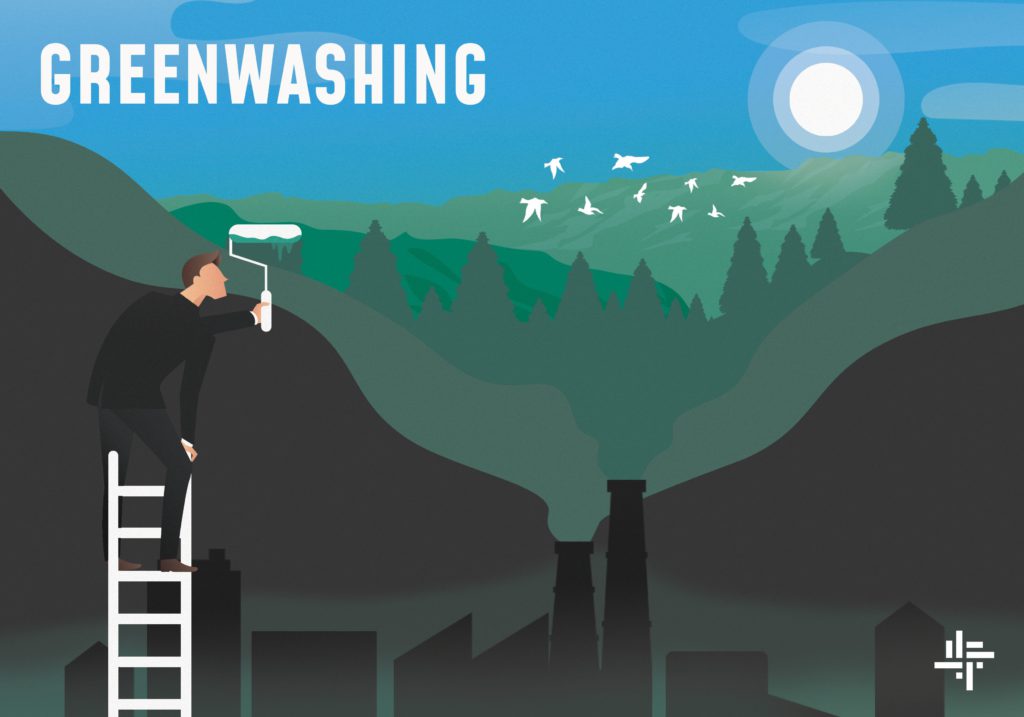
Image Credit: Medium.com
Greenwashing is a marketing strategy companies employ to create the illusion of being environmentally responsible or sustainable. This deceptive practice involves making claims about a product or service’s eco-friendliness without providing credible evidence to support those claims. Companies engage in greenwashing to tap into the growing consumer demand for environmentally friendly products, often using misleading language or imagery to misrepresent their offerings.
Are biodegradable claims in the balloon industry verified?
In the balloon industry, claims of biodegradability are not always independently verified. This lack of independent verification can make it challenging for consumers to trust the environmental claims made by balloon manufacturers and sellers. As a result, consumers need to exercise caution and conduct thorough research when considering eco-friendly balloon options.
How can consumers avoid falling for greenwashing?
To avoid falling for greenwashing tactics and make responsible choices, consumers can take several steps:
- Look for Third-Party Certifications: Seek products with third-party certifications or labels verifying their environmental claims. These certifications are often more reliable indicators of a product’s eco-friendliness.
- Read Reviews and Do Research: Read product reviews and conduct online research to gather information from other consumers and experts. This can help you gauge the credibility of a product’s environmental claims.
- Consider the Entire Life Cycle: Evaluate a product’s entire life cycle, from production to disposal. Sustainable choices encompass not only the product’s use but also its environmental impact throughout its lifecycle.
- Support Transparency: Support companies that are transparent about their environmental practices and provide detailed information about their products’ sustainability. Companies that are open about their processes are more likely to be genuine in their environmental claims.
Conclusion
In conclusion, when selecting balloon options for your celebrations, it is crucial to prioritize their environmental impact. Both biodegradable and compostable balloons represent eco-friendly alternatives to traditional balloons, allowing individuals to enjoy festive occasions while reducing harm to wildlife and curbing pollution. However, exercising vigilance and avoiding deceptive greenwashing practices within the balloon industry is equally important.
By making informed choices, consumers have the power to contribute significantly to a greener and more sustainable future. Embracing responsible balloon options not only enhances our celebrations but also supports the preservation of our precious environment for generations to come.



